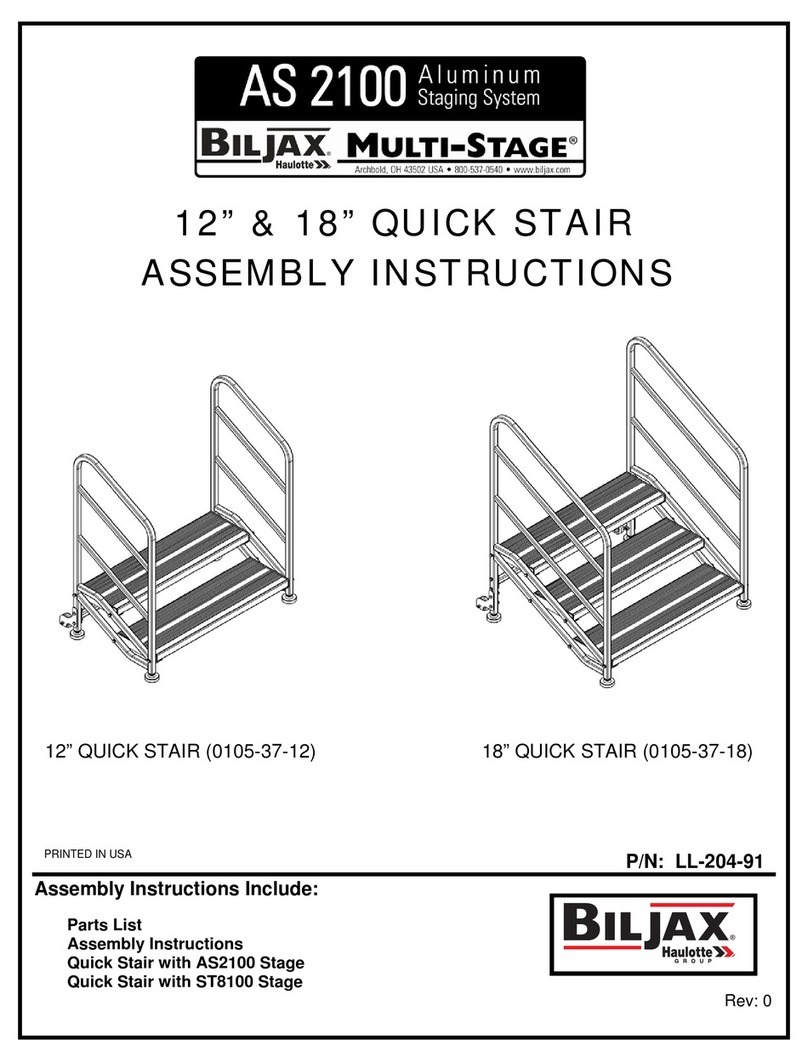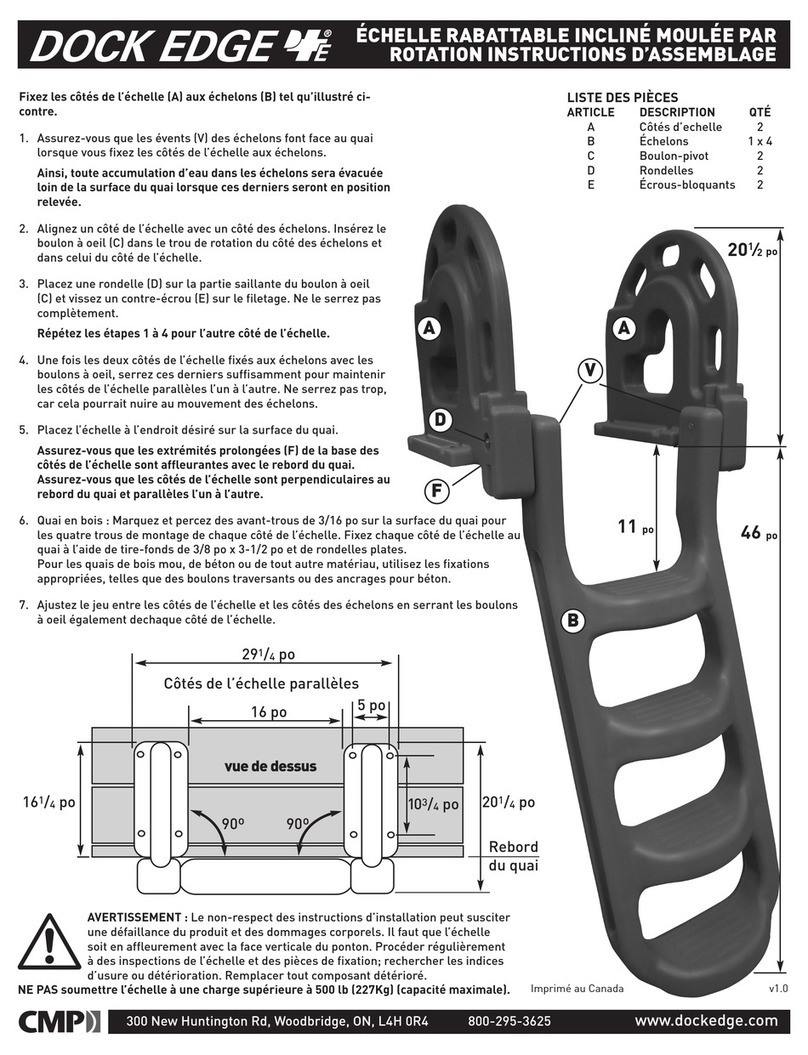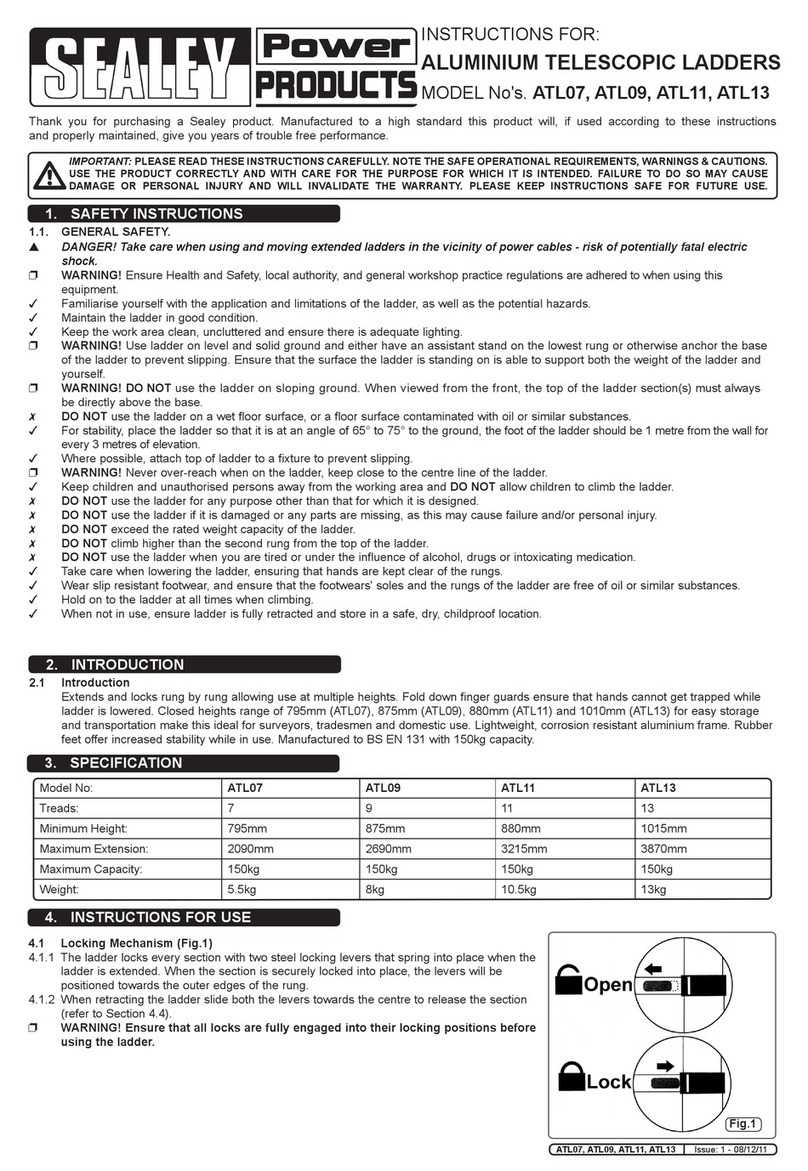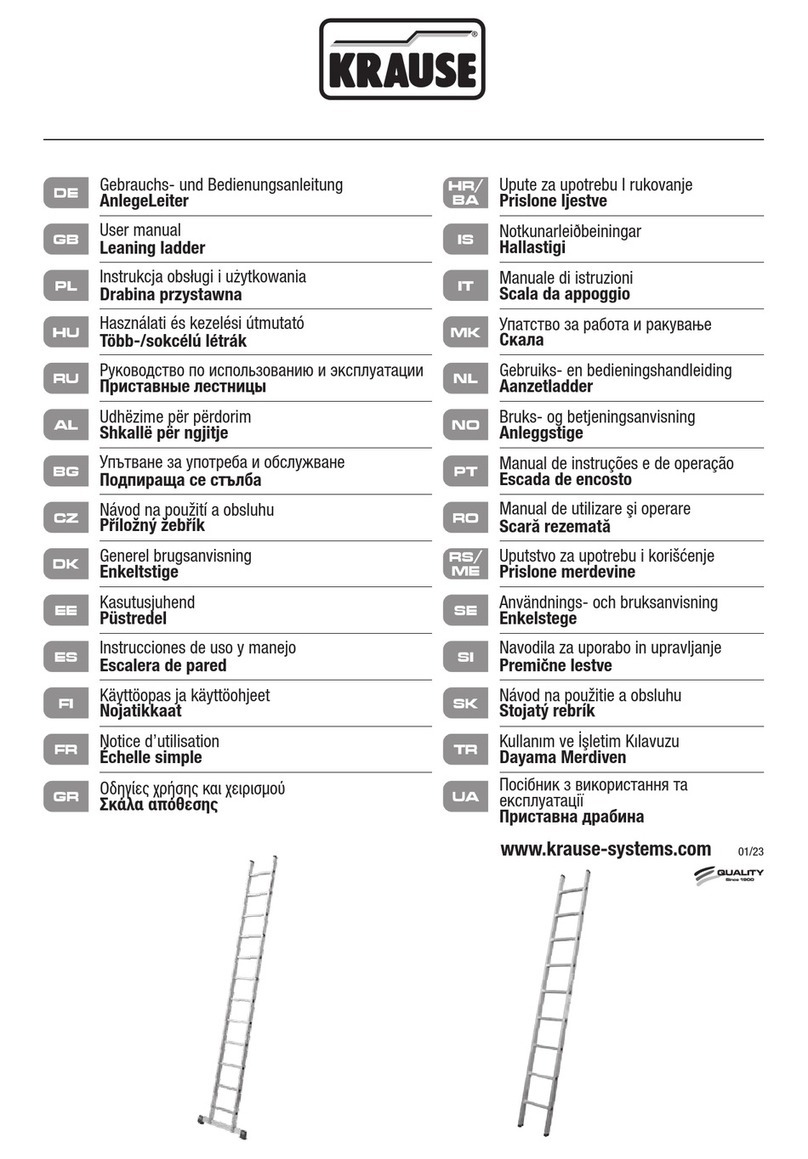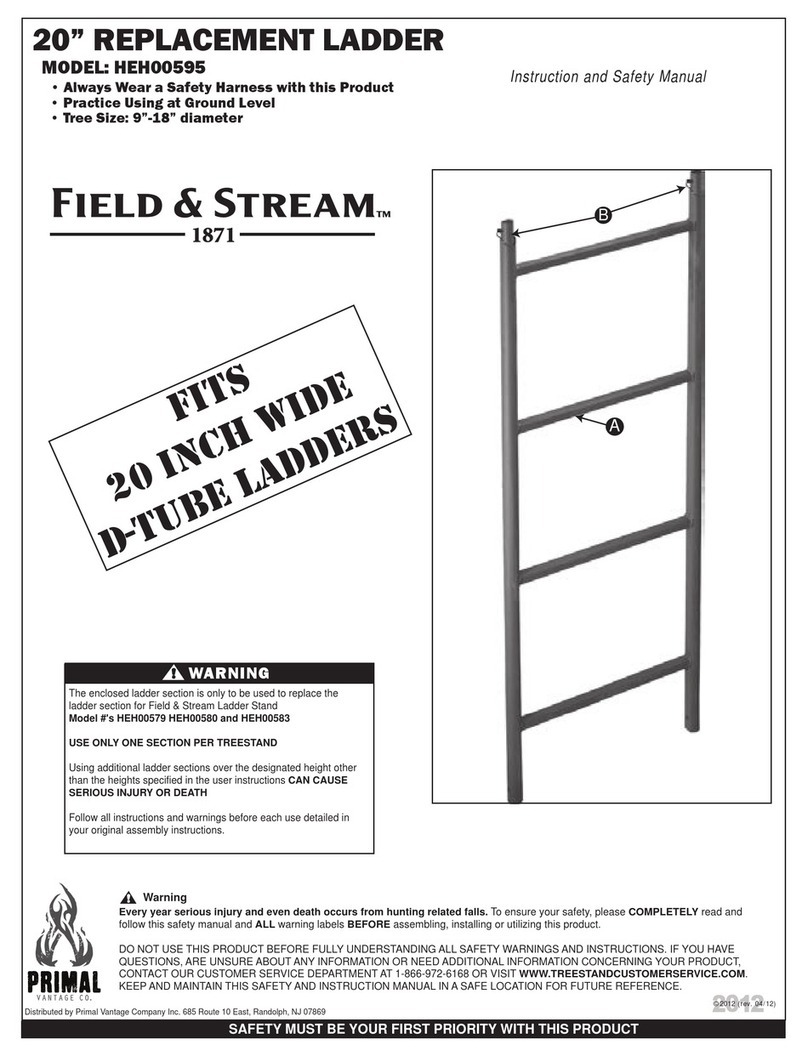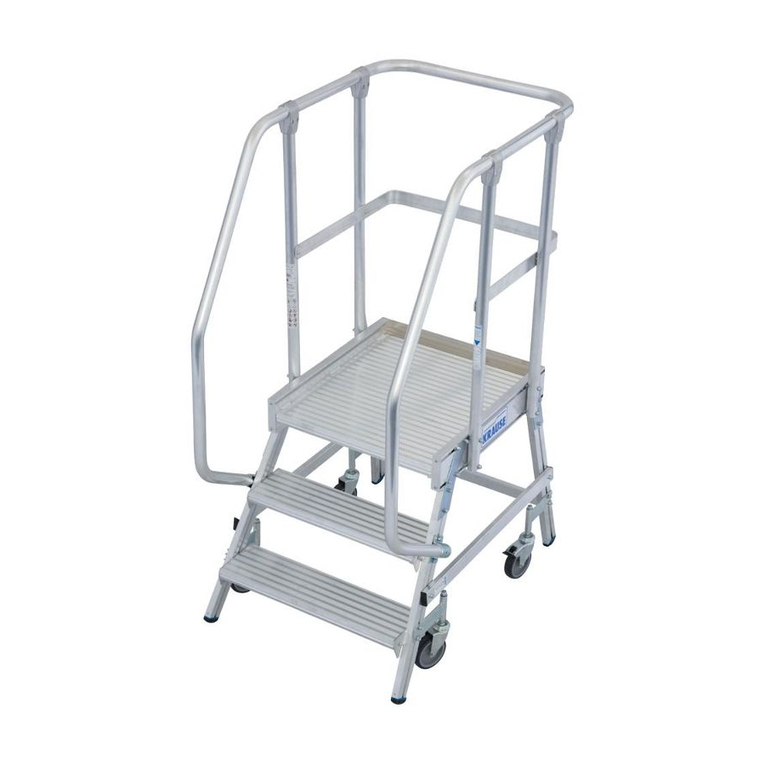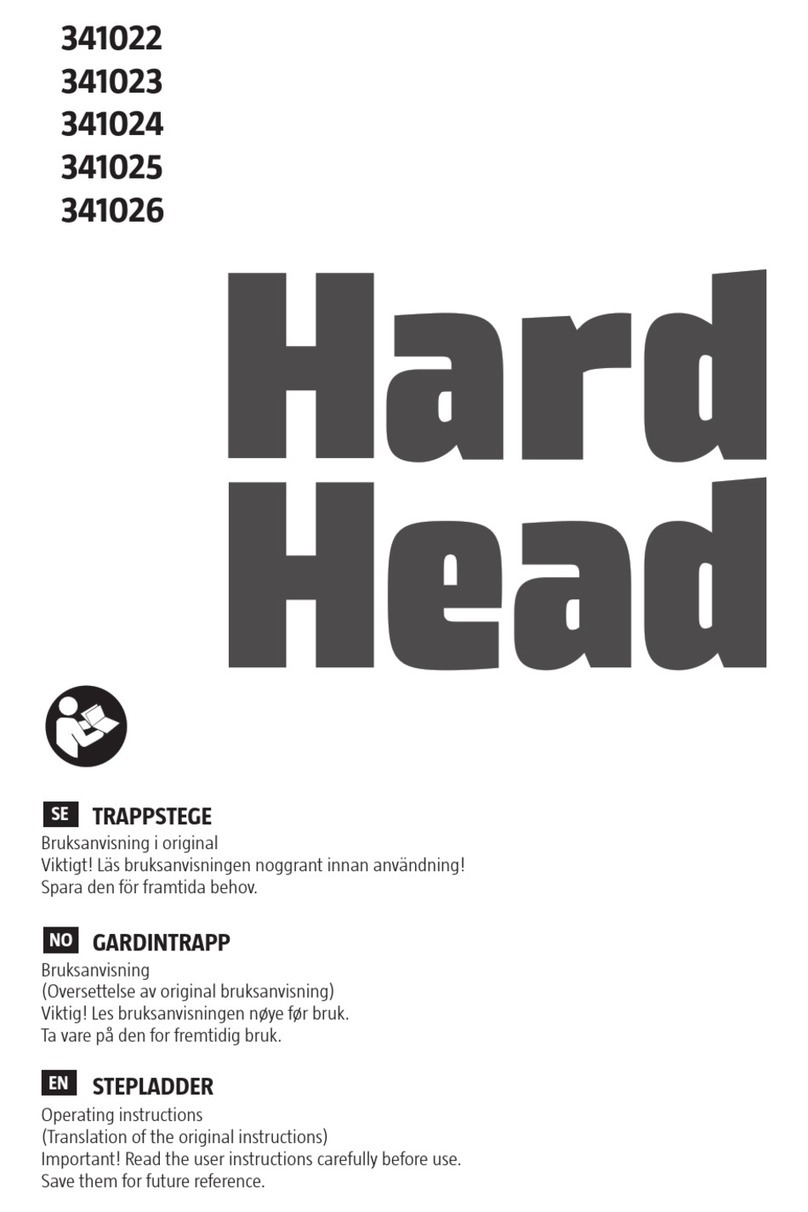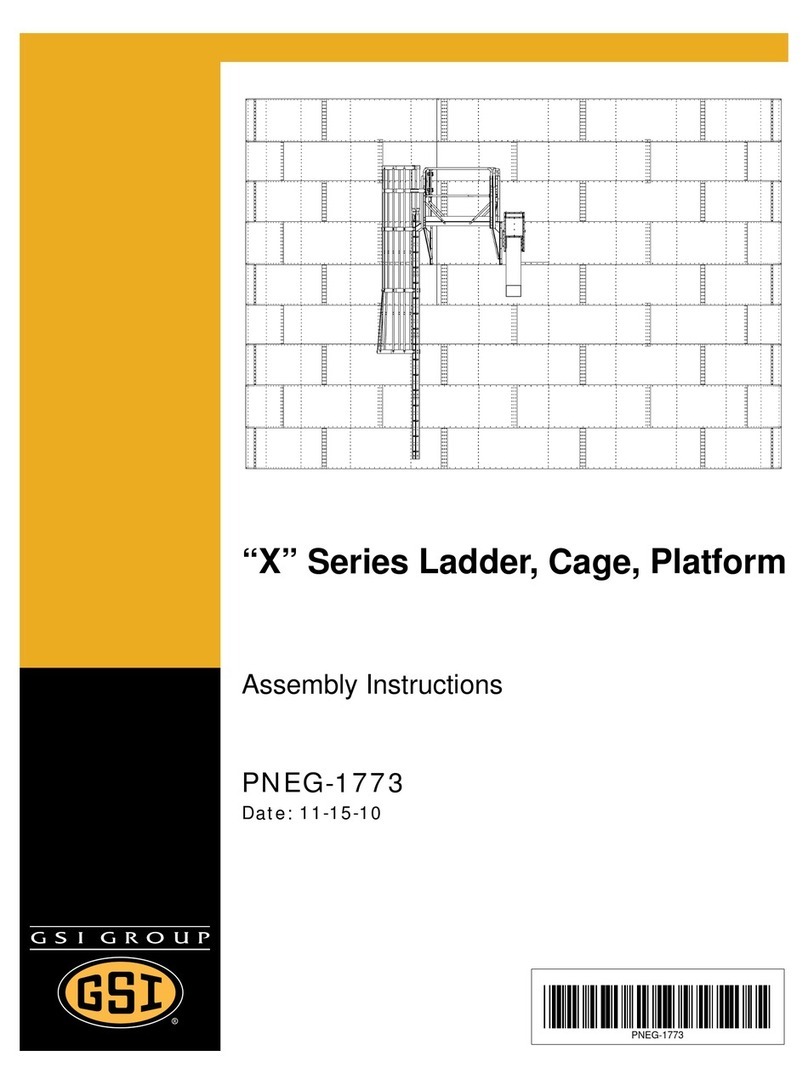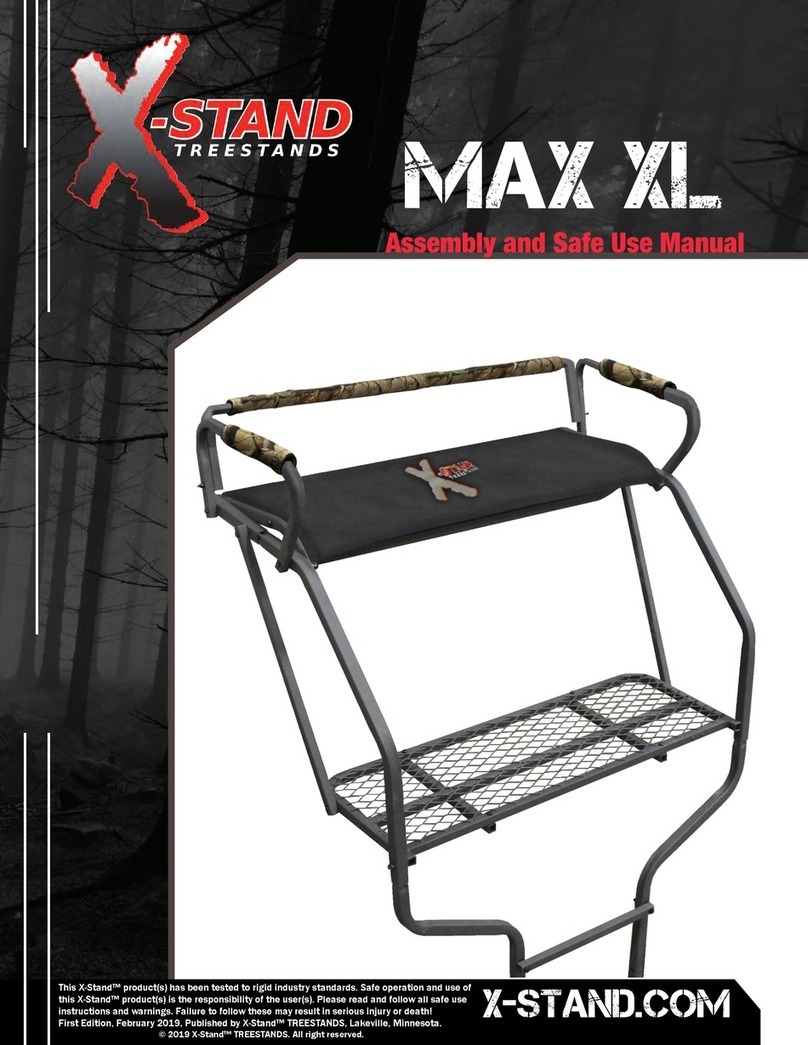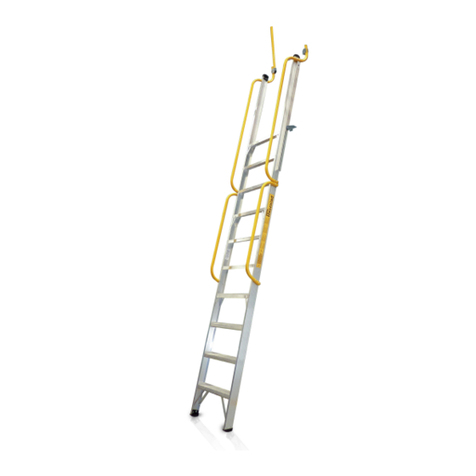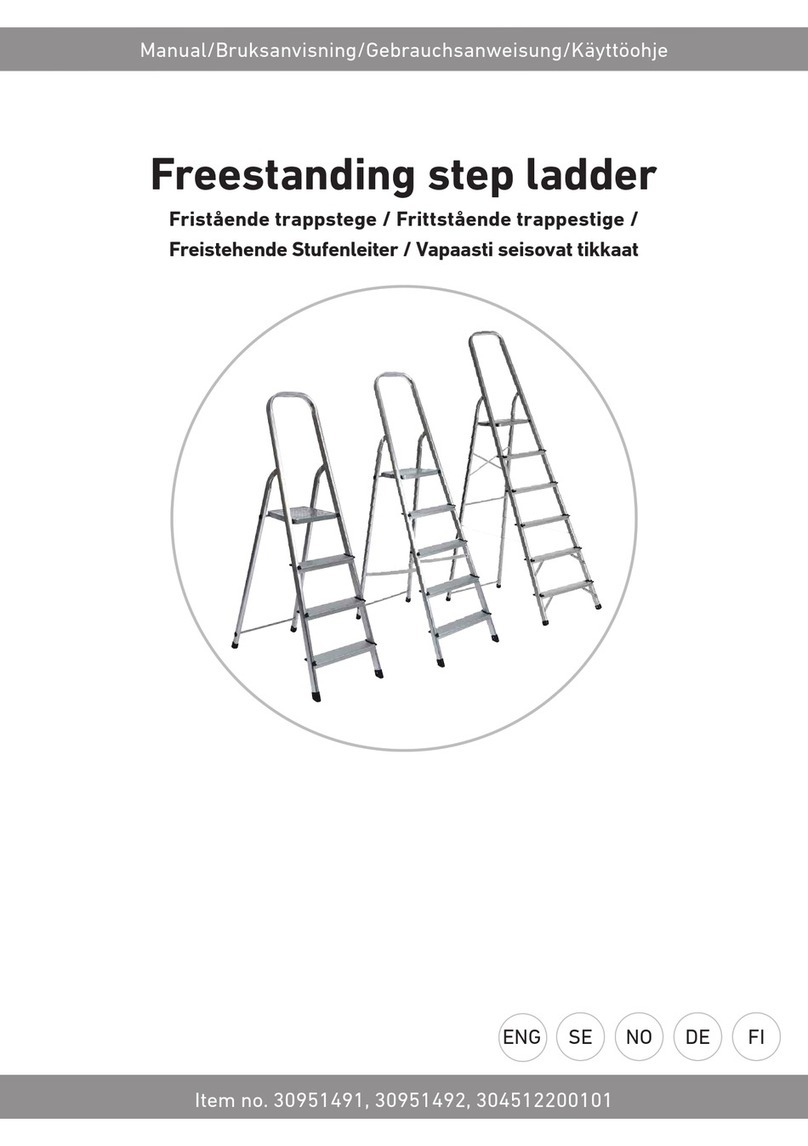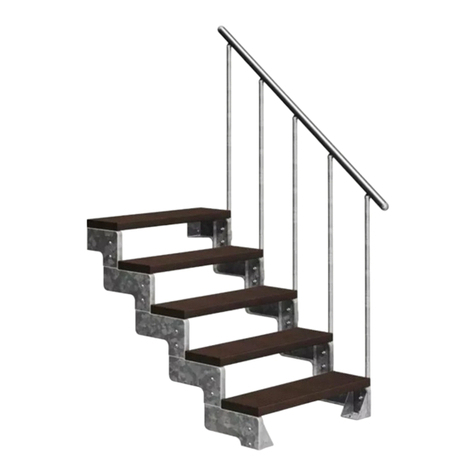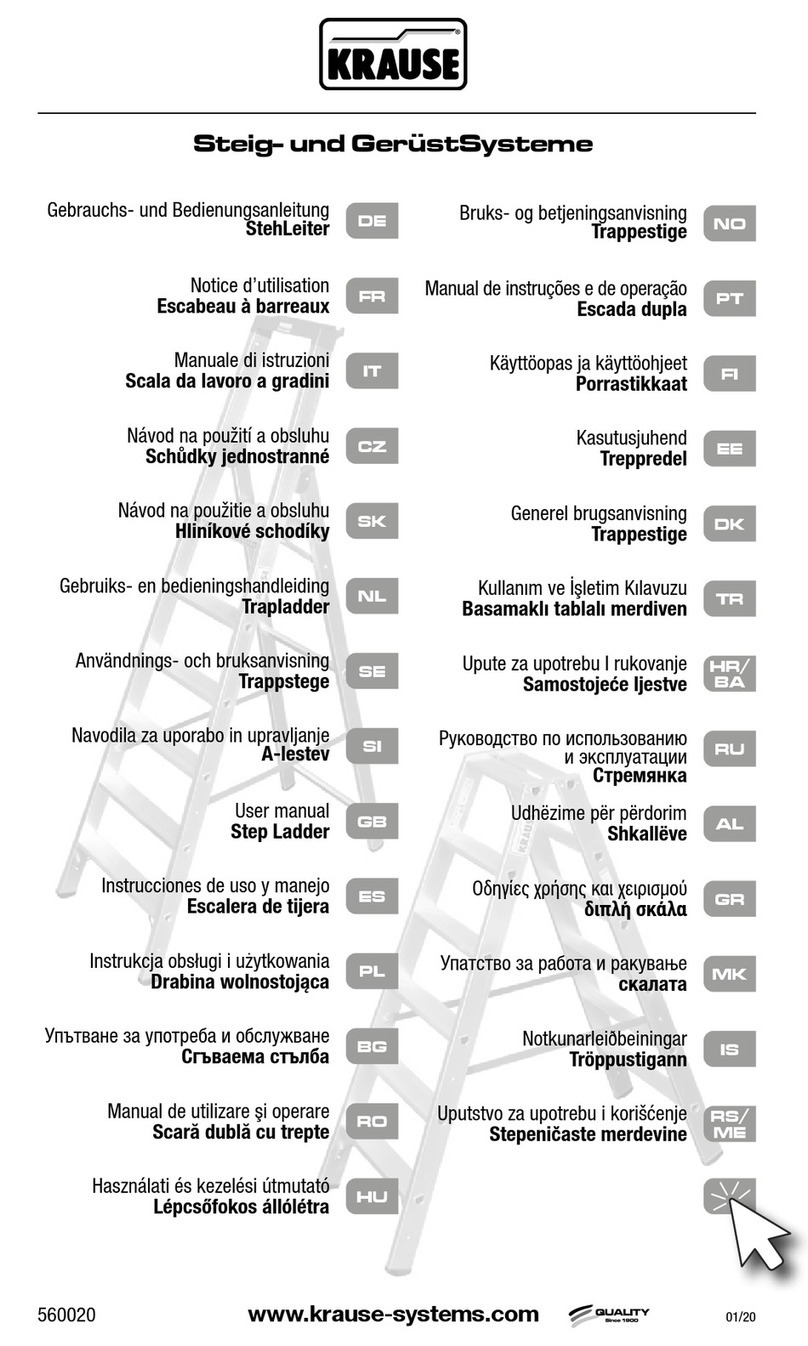
File: ALC – LGL15144 – Operating Instructions – V15.1
OPERATING INSTRUCTIONS
General:
1. Do not force the hin es in or out usin any tools. You may
cause permanent dama e to the hin e mechanism.
2. If there is pressure on the hin e lock pins, they may not
open properly. Relieve the pressure by movin one half of
the ladder back and forth until the hin e locks move with
minimal force.
3. Make sure each Rock Lock is fully en a ed into the
appropriate run tube before climbin on the ladder. Failure
to do so may result in injury.
4. For your safety, set up your ladder so the run s are always
level from front to back and from side to side.
5. Keep clothin and body parts out of all movin
mechanisms, includin the Hin e Locks and Rock Locks to
avoid pinchin .
6. Keep clothin and body parts away from run s when
telescopin the outer ladder over the inner ladder.
7. Use caution when usin the ladder around electricity.
Ensure that the ladder does not come in contact with
electrical circuits or currents.
8. The Conquest has an OSHA and ANSI Type IA duty ratin
of 300 pounds.
9. Do not stand above the third run from top.
10. Little Giant Ladder Systems assumes no liability for
dama e or injury that may result from failin to follow all
instructions correctly.
11. Keep all ladder run s, ladder feet, work platforms, and
other standin and rippin surfaces clean and free from
forei n materials.
12. Do not lean too far over the side of the ladder and keep
both feet on the run s at all times; as a rule of thumb, keep
your navel between the rails.
13. Inspect feet for wear; replace them when necessary.
14. Read all labels on the ladder before use. A-Frame and
Staircase Ladder Safety Ti s:
1. Ensure that the Hin e Locks and Rock Locks are securely
en a ed before climbin your ladder.
2. Make each of your ladder’s four feet are solidly planted
before climbin .
3. When usin your ladder on a stair case, ensure that the
run s are level and that each foot is on a solid, secure
surface.
Extension Ladder Safety Ti s:
1. Do not allow the full wei ht of the ladder to fall on the
hin es as the ladder folds from the extension to the A-frame
position.
2. Flared base must be placed at the bottom of the ladder in
the extension position.
3. When releasin the Rock Locks, make sure you support
the inner ladder assembly with one hand to prevent it from
slidin down rapidly. Failure to do so may result injury.
4. Use the proper an le for the extension ladder position.
The distance from the base of the ladder to the bottom of
the support wall should be one-fourth the workin hei ht of
the extension ladder (minimum distance between ladder
and support wall must be 3 feet).
5. Fully en a e the Hin e Locks before use, failure to do so
may result in injury.
6. When usin your Conquest as a tall extension ladder,
stake the feet to the round and tie down the top for extra
security. Extend the ladder at least 3 feet above a supportin
roof or eve.
Scaffolding Safety Ti s:
1. Do not use outer or inner sections of the ladder as a
separate stepladder.
2. Be sure to set the two outer ladder assemblies with the
run s facin out with the trestle brackets properly en a ed.
3. When the scaffoldin plank is above the third run (three
feet hi h), it may be used as a work bench, but not as a
standin platform.
4. ANSI rules state that the scaffoldin plank should not be
used as a standin platform at hei hts reater than three
times the minimum width of the base section.
5. The scaffoldin system has a one-man, 250-pound ratin .
6. Only one person should be on the scaffold plank at a time.
Work Platform Safety Ti s:
1. If you purchased a Work Platform for your Conquest, you
can use it as an additional tool tray or as a standin platform.
2. Do not use the Work Platform as a standin platform
above the third run from the top, in either A-frame and
extension confi urations.
3. Make certain the Work Platform is secure on the run
before standin on it.
